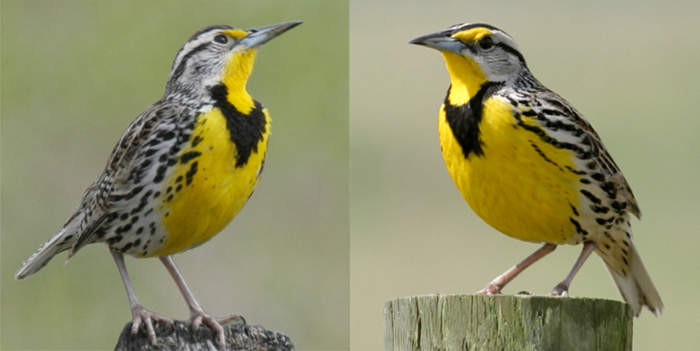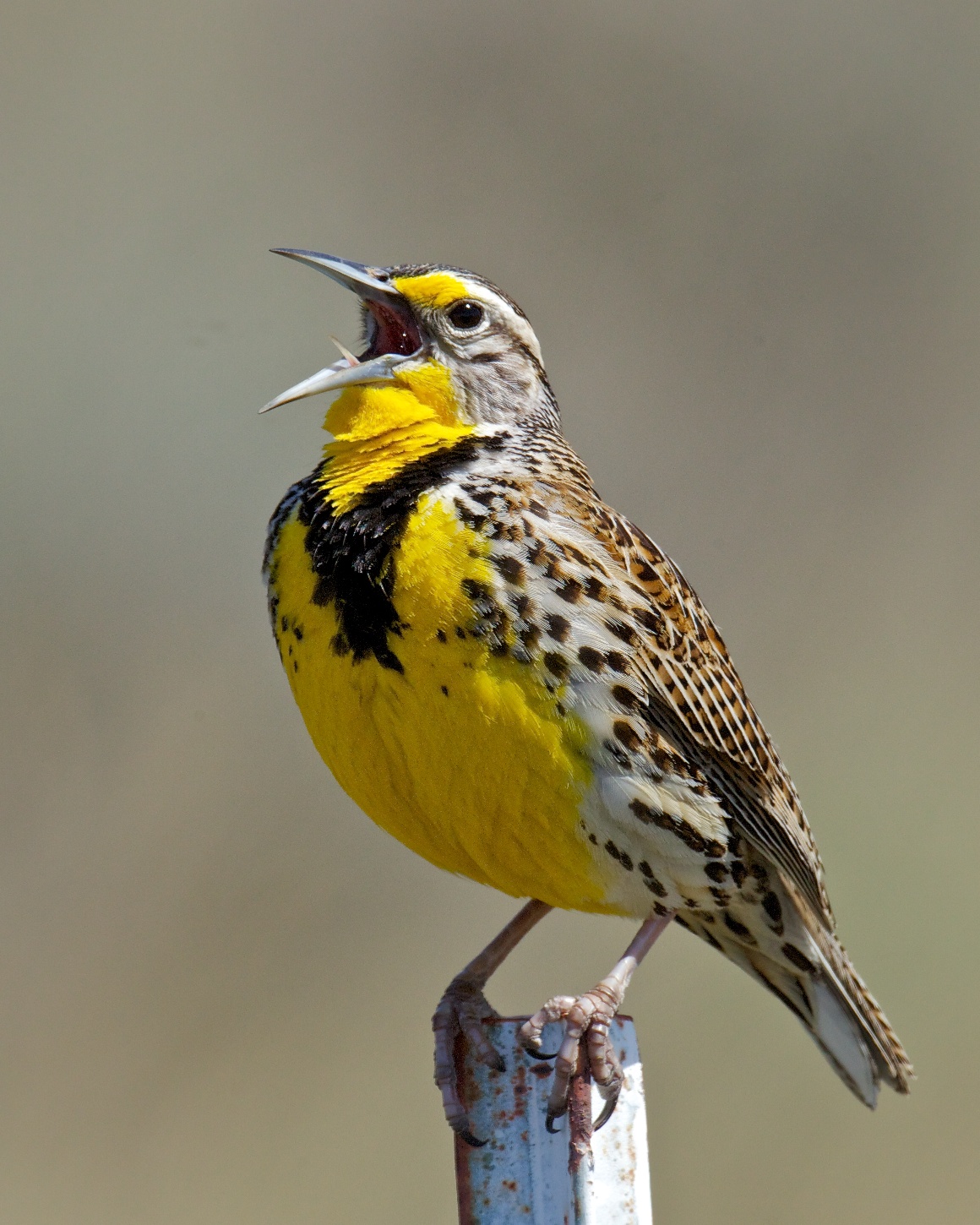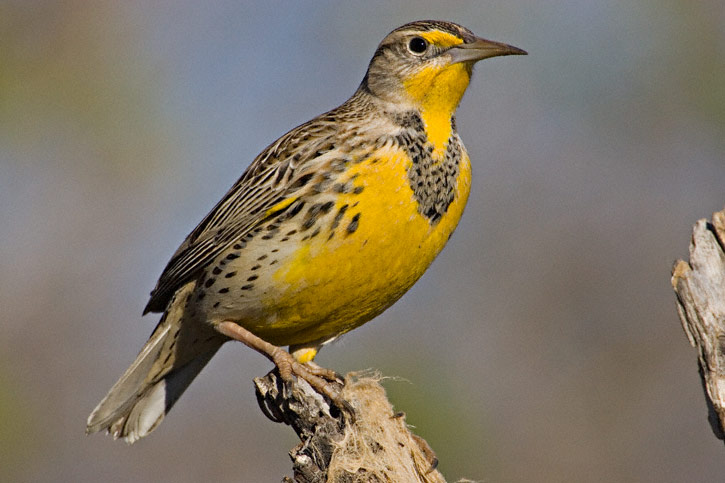
Sturnella neglecta
TAXONOMY
Sturnella neglecta Audubon, 1844, Old Fort Union, North Dakota.
OTHER COMMON NAMES
French: Sturnelle de l’ouest; German: Wiesenstдrling; Spanish:
Triguera de Occidente, Pradero Occidental.
PHYSICAL CHARACTERISTICS
8.5–9.5 in (21.5–24 cm); female 3.2 oz (89 g), male 4 oz
(115 g). Sexes alike in color. Throat and underparts bright yellow,
with a black V on the breast; yellow stripe over the eye;
back, wings, and tail mottled with brown; outermost tail feathers
white.
DISTRIBUTION
Breeds from central British Columbia and Alberta east to
southern Ontario, and south through the Great Plains to central
Mexico and northern Baja California. Winters from southern
British Columbia and the central Plains to central Mexico
and Baja California.
HABITAT
Grasslands, pasture, savanna, and cultivated fields.
BEHAVIOR
Territorial during the breeding season. Males defend a territory
with songs, fights, and chases. Flight songs are common.
In winter, they are found in small groups.
FEEDING ECOLOGY AND DIET
Forage almost entirely on ground, gathering grain, seed, and
insects. Feeds mostly on insects during the summer, grain in
winter and early spring, and weed seeds in the fall.
REPRODUCTIVE BIOLOGY
Males often are simultaneously mated to two or more females.
Females build a domed nest that is placed on the ground.
Three to 7, most commonly 5 eggs are laid late April–early August.
Incubation 13–14 days; fledging at about 10–12 days. Single
brooded, but females renest if their first effort was
unsuccessful.
CONSERVATION STATUS
Not threatened. Widespread and common, but numbers declining
in many areas. Agricultural practices affect breeding
through habitat degradation, destruction of nests by equipment
and trampling of nests by livestock.
SIGNIFICANCE TO HUMANS
Western meadowlarks destroy sprouting grain by drilling beside
the new shoots and removing the kernels. However, they
eat large numbers of insects that can damage crops.
Photo Gallery of - Western meadowlark




 Animalia Life
Animalia Life